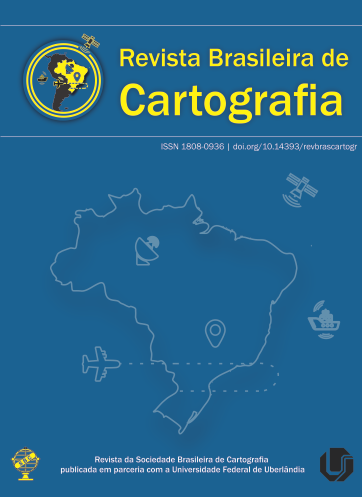NDVI Sensitivity for the Identification of the Flow Regime in First-order Rivers: a Case Study in Southwest Paraná
Main Article Content
Abstract
Drainage network mapping frequently has problems to classify flow regime and extent of first-order rivers, especially in forested areas. However, the vegetation associated with the rivers can be a proxy to their flow regime by the application of the vegetation index, among which, the NDVI (Normalized Difference Vegetation Index) is the most used worldwide. The objective of this paper was to evaluate the potential application of NDVI to vegetation associated with first order rivers to differentiate between perennial and intermittent drainage. The study area presents semideciduous seasonal forest and covers part of the municipalities of Francisco Beltrão, Renascença, and Marmeleiro, in the southwest of the Paraná state. Twenty perennial and twenty intermittent first-order rivers were identified in the field with tree native vegetation. Once identified in the cartographic base, buffers of 0-15 m and 15-30 m were generated next to the drainage channel. These buffers were used to obtain the NDVI values, calculated from RapidEye images for the dates of 8/1/2018 (T1) and 10/9/2018 (T2). The difference in NDVI was verified between the two periods (Δ-NDVI) for each buffer. To verify whether the differences were significant, the Mann-Witney test was applied. It was observed that the NDVI values followed the climatic characteristics, showing values close to 0.9 (T1), and sometimes this value decreased up to 0.6 (T2). The Δ-NDVI values along the intermittent rivers were higher, proving the initial hypothesis; however, the differences were not statistically significant.
Downloads
Metrics
Article Details
Authors who publish in this journal agree to the following terms:
- Authors retain copyright and grant the journal right of first publication with the work simultaneously licensed under a Creative Commons Attribution License that allows others to share the work with an acknowledgment of the work's authorship and initial publication in this journal.
- Authors can enter into separate, additional contractual arrangements for the non-exclusive distribution of the journal's published version of the work (e.g., post it to an institutional repository or publish it in a book), with an acknowledgment of its initial publication in this journal.
- Authors are permitted and encouraged to post their work online (e.g., in institutional repositories or on their website) before and during the submission process, as it can lead to productive exchanges, as well as earlier and greater citation of published work (see "The Effect of Open Access").





